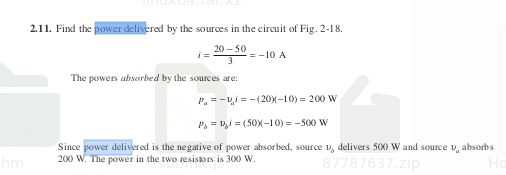I am figuring out the current for the following circuit:
Using V = IR, I would expect to do I = V / R and then do:
I = (20 + 50) / (1 + 2) = 70 / 3 Amps.
However, the actual current is:
(20 - 50) / 3 = -10 Amps
Why are the voltages subtracted rather than added?
References to blog posts / textbook chapters would also be appreciated (if available).
Here's the full solution, if it helps anyone:



